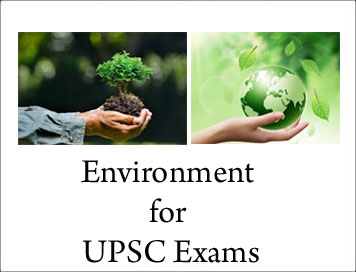(HOT) UPSC Current Affairs 2025 PDF
NEW! The Gist (NOV-2025) | E-BOOKS
Microbeads : Environment for UPSC Exams

Microbeads : Environment for UPSC Exams
Microbeads
-
Microbeads are manufactured solid plastic particles of less than five millimeters in their largest dimension.
-
They are most frequently made of polyethylene but can be of other petrochemical plastics such as polypropylene and polystyrene.
-
They are used in exfoliating personal care products, toothpastes and in biomedical and health-science research.
-
Microbeads can cause plastic particle water pollution and pose an environmental hazard for aquatic animals in freshwater and ocean water.
-
In the US, the Microbead-Free Waters Act of 2015 phases out microbeads in rinse off cosmetics by July 2017. The Netherlands was the first country to ban cosmetic microbeads in 2014.
-
Microbeads are washed down the drain, can pass unfiltered through the sewage treatment plants and make their way into rivers and canals, resulting in plastic particle water pollution.
-
A variety of wildlife, from small fish, amphibians and turtles to birds and larger mammals, mistake microbeads for their food source.
-
This ingestion of plastics introduces the potential for toxicity not only to these animals but to other species higher in the food chain.
-
Greenpeace refers to it as a “toxic time bomb”. Once in the marine environment microplastics can both release and absorb toxins, which can then move throughout the foodchain.
